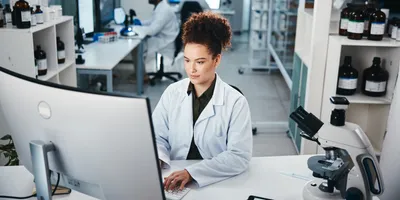Laboratory ovens are multi-purpose instruments offering various uses, such as curing, drying, annealing, sterilization, evaporation, and materials testing.
There are many types of ovens used in laboratories. Examples include:
- Curing oven: causes a substance to undergo a chemical reaction at reaching a specified temperature
- Drying oven: removes moisture from a processing application
- Baking oven: used for functions such as curing and drying
- Reflow oven: used for applications like reflow soldering of printed circuit boards and surface-mount of electrical components
- Heavy-duty oven: used in material testing laboratories; they take on big, heavy loads
- High-temperature oven: performs an array of heat treatment applications on glass and metal
- Cleanroom oven: best for eliminating pollutant particulates in the chamber, often used in the medical, electronic, and pharmaceutical industry
- Vacuum oven: removes moisture, gas, and other volatile chemicals while preventing reactions in reduced atmospheres; used for drying heat-sensitive materials
- Class A oven: for applications that involve combustible/flammable solvents
Why prioritize lab oven safety?
Laboratory ovens and their components can pose risks such as fire, explosion, and burn hazards. Exercising proper safety practices can minimize injuries and accidents.
Any individual operating a lab oven should wear appropriate personal protective equipment, including a lab coat, heat-resistant sleeve protectors/gloves, and eye and face protection. Before operating any laboratory oven, check to ensure it is in proper working condition, located away from any other potential hazards, and that all devices and sensing mechanisms are operational. If the oven is not operating within normal parameters, it must be taken out of service and not used until repairs are made.
Do not use ovens for any chemical that might pose a hazard because of acute or chronic toxicity, unless special precautions have been taken to ensure continuous venting of the oven’s atmosphere to the outdoors. It may be advantageous to operate the oven in a lab hood in certain situations.
An essential safety feature that comes with any oven is the user manual, which must be kept readily available for all oven operators. Before lab workers use the oven for the first time, they should read the entire manual to understand how to operate and safely maintain it. Management should ensure that all operators are given appropriate training before the oven is used.
Safety features
To prevent fires and protect valuable samples from overheating, select an oven with an over-temperature protection device so that the oven shuts down if a maximum temperature has been exceeded. Other features include a temperature monitoring alarm, overcurrent protection, and blow-out panel.










